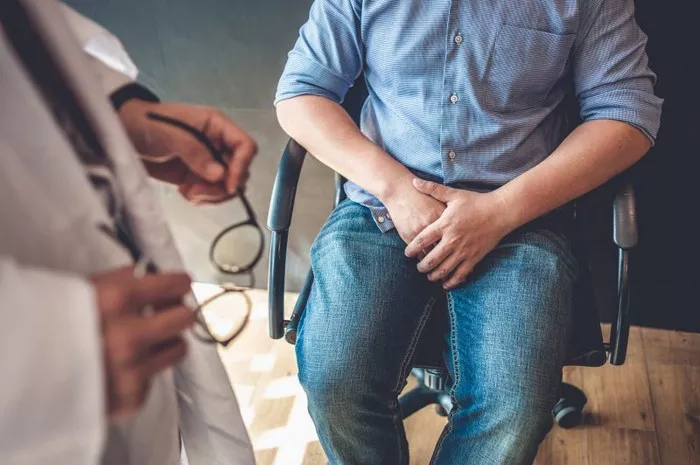Varicocele is a condition in which the veins inside the scrotum become enlarged and twisted, much like varicose veins in the legs. This condition affects many men, especially those in their teens and early adulthood. It can lead to discomfort, fertility issues, and in some cases, severe complications. A common question that arises among those diagnosed with varicocele is, “Which side of the varicocele is bad?” Understanding the side of the varicocele and how it may affect your health is important for proper diagnosis and treatment.
What Is a Varicocele?
Before delving into which side of the varicocele may be more concerning, it is essential to understand what a varicocele is and how it develops. A varicocele occurs when the veins within the scrotum, which are responsible for draining blood from the testicles, become enlarged and abnormally twisted. The condition is more common on the left side, although it can occur on either side or, in rare cases, both sides of the scrotum.
Varicoceles are typically classified into grades, based on their severity. Grade 1 represents a small varicocele that is not visible but can be felt during a physical exam, while grade 3 represents a larger, visible varicocele. A varicocele can lead to discomfort, swelling, or a feeling of heaviness in the scrotum. It can also affect male fertility by impairing sperm production and quality.
Left-Sided Varicocele: The More Common Side
While varicoceles can develop on either side of the scrotum, the left side is by far the more common location for this condition. In fact, it is estimated that 90% of varicoceles occur on the left side. The reason for this is related to the anatomy of the venous system.
Why Is the Left Side More Prone to Varicocele?
The left testicular vein drains into the left renal vein before entering the inferior vena cava. This arrangement creates a situation where the left testicular vein is exposed to higher pressure. When blood flow in the veins is impaired or the valves in the veins fail, it can lead to an enlargement of the veins, causing varicocele. The right testicular vein, on the other hand, drains directly into the inferior vena cava, which results in lower pressure and a less likely occurrence of varicocele.
This higher pressure on the left side contributes to the greater prevalence of varicoceles on the left testicle. Additionally, the left testicular vein is longer and has more potential points of pressure, further increasing the likelihood of vein enlargement.
Symptoms of Left-Sided Varicocele
For men with a left-sided varicocele, the symptoms may include a feeling of heaviness or fullness in the scrotum, discomfort or pain that worsens throughout the day, and, in some cases, visible swelling of the veins. While the symptoms can vary in severity, most men with a left-sided varicocele do not experience severe pain. However, left-sided varicocele can sometimes be associated with fertility issues, as it may affect the production of healthy sperm in the left testicle.
Right-Sided Varicocele: A Rare but Concerning Condition
Although varicocele is most commonly found on the left side, it can occasionally develop on the right side as well. Right-sided varicoceles are much less common, accounting for only about 10% of cases. Despite being less frequent, right-sided varicoceles are often considered more concerning than left-sided ones due to their potential association with other health conditions.
Why Is Right-Sided Varicocele More Concerning?
A right-sided varicocele can sometimes be indicative of a more serious underlying issue. While most left-sided varicoceles are benign and occur due to increased pressure in the venous system, a right-sided varicocele may be linked to problems such as:
Tumors or Masses: In some cases, a right-sided varicocele can be a result of a mass or tumor that is compressing the right testicular vein. These tumors, which may be benign or malignant, can obstruct blood flow and cause the veins to become enlarged. This is why a right-sided varicocele requires thorough investigation and should not be overlooked.
Abnormal Blood Flow: A right-sided varicocele may indicate abnormal blood flow in the veins. If there is a blockage or other circulatory issues on the right side of the body, the veins in the scrotum may become enlarged in an attempt to bypass the obstruction. This abnormal blood flow can be a sign of other cardiovascular or venous problems that require treatment.
Other Health Conditions: In some cases, a right-sided varicocele may be associated with other health conditions, such as kidney issues or deep vein thrombosis (DVT). These conditions can affect the venous drainage system and lead to the development of a varicocele on the right side.
Symptoms of Right-Sided Varicocele
The symptoms of a right-sided varicocele are similar to those of a left-sided varicocele. Men may experience discomfort or a feeling of fullness in the scrotum, as well as visible swelling of the veins. However, the presence of a right-sided varicocele may also raise suspicion for other medical conditions. As a result, men with a right-sided varicocele should undergo further testing to rule out any underlying health issues.
Diagnosis of Varicocele
If you notice any symptoms of varicocele, whether on the left or right side, it is important to consult a healthcare provider for a proper diagnosis. A physical examination will typically be the first step in diagnosing a varicocele. During the examination, the doctor will palpate (feel) the scrotum to check for enlarged veins. In most cases, the varicocele can be felt and diagnosed without the need for additional testing.
In some situations, an ultrasound may be recommended to confirm the diagnosis and assess the severity of the varicocele. Ultrasound uses sound waves to create an image of the veins and blood flow in the scrotum, allowing the doctor to see if there are any abnormalities. In cases of right-sided varicocele, further imaging tests may be performed to rule out underlying conditions, such as tumors or vascular abnormalities.
Treatment for Varicocele
Treatment for varicocele is typically recommended if the condition is causing pain, discomfort, or fertility issues. In many cases, treatment is not necessary if the varicocele is asymptomatic and does not affect fertility. However, if the varicocele is causing significant symptoms, several treatment options are available.
Conservative Treatment
In mild cases of varicocele, conservative management may be recommended. This includes wearing supportive underwear, such as briefs, to reduce discomfort. Pain relievers, such as ibuprofen, may also help manage pain and inflammation. In some cases, doctors may advise men to avoid activities that can worsen symptoms, such as heavy lifting or prolonged standing.
Surgical Treatment
If the varicocele is causing significant pain or fertility problems, surgery may be necessary. The most common surgical procedure for treating varicocele is a varicocelectomy, which involves removing or tying off the enlarged veins. This can help restore normal blood flow and alleviate symptoms. In some cases, embolization, a minimally invasive procedure, may be recommended. During embolization, a catheter is used to block the affected veins, causing them to shrink.
Conclusion
Varicocele is most commonly found on the left side of the scrotum, but it can also occur on the right side. While a left-sided varicocele is usually harmless and related to increased venous pressure, a right-sided varicocele can be more concerning and may indicate underlying health problems. It is important to seek medical attention if you experience symptoms of varicocele, especially if the varicocele is on the right side, to rule out other serious conditions. With proper diagnosis and treatment, varicocele can be managed effectively, helping men regain comfort and improve their fertility.
Related topics:
How Does a Varicocele Test Look Like?























